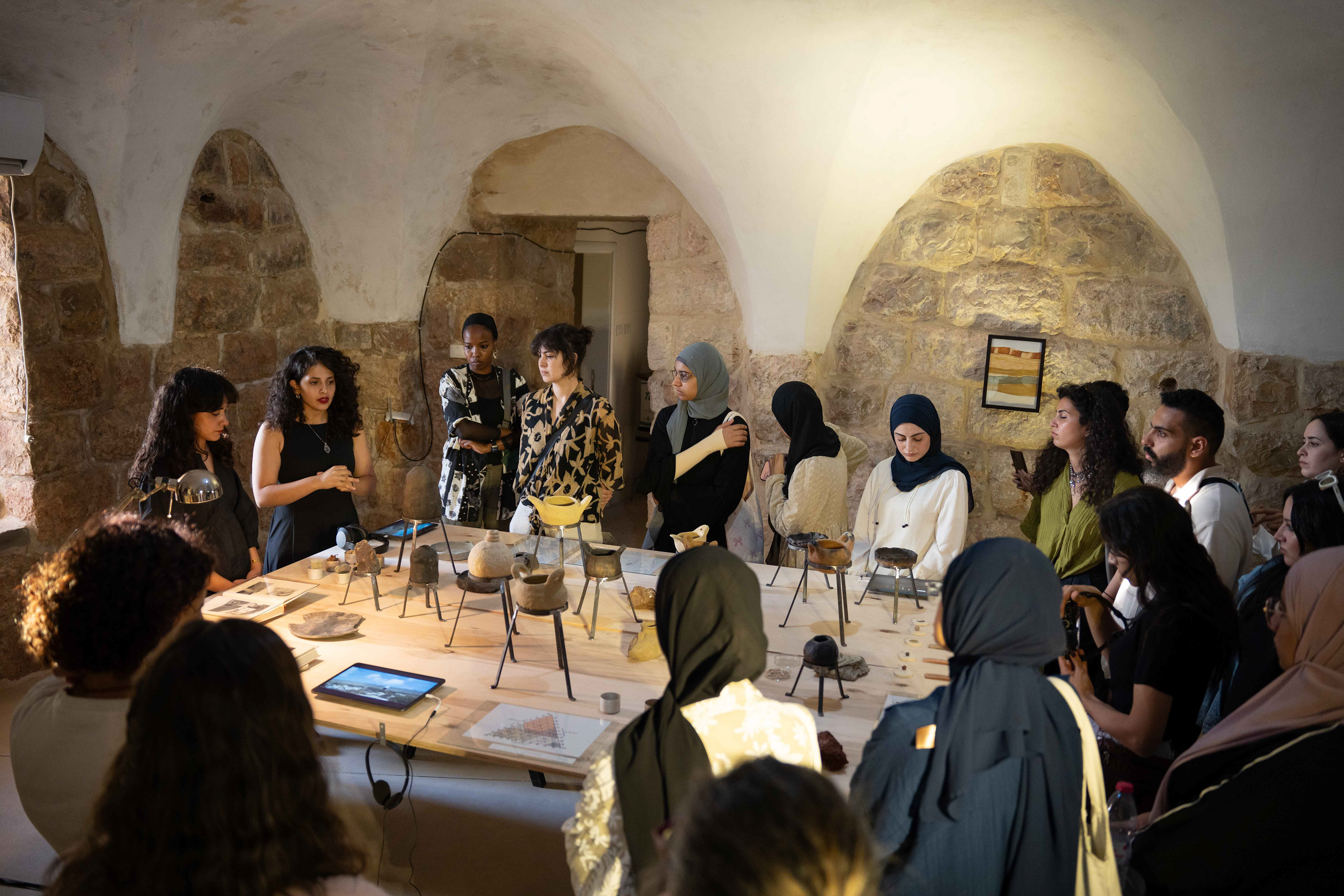Between Lime and Clay is a collaborative design and material research project exploring the ecological, cultural, and practical potential of local earth materials in Palestine’s Central Mountains, where geological layers alternate between clay, marl, and limestone. Rapid urban development, quarrying, and settler-colonial policies have left visible scars across villages such as Kufr Aqab, Rafat, Qalandiya, Al-Jib, and Qatanna—open pits, mixed earth waste, and disrupted terrains that reveal the politics and histories of these materials.
The project engages directly with these materials, examining their role as carriers of memory, knowledge, and possibility. Through field research, hands-on workshops, and material experimentation, we collect samples, test them, and revisit local knowledge with community members and elders.
Traditional earthen objects, such as cooking pots, storage vessels and baking ovens, serve as pedagogical tools. By remaking and experimenting with them, we explore how local materials can reconnect communities with land and ecological knowledge.
In July 2024, we presented our research in Qalandiya, featuring archival materials, collectively made objects, and a public program of workshops, talks, and communal gatherings focused on earth-based inks, pottery, and taboun bread-making. These events created embodied spaces for exchange and reflection on material knowledge amid ongoing heritage loss and erasure.






This project is supported by A.M. Qattan Foundation as part of “Hirakat” grant 2023, and in partnership with Riwaq Center, Al-Jib Preservation Team and Al-Jib Municipality
